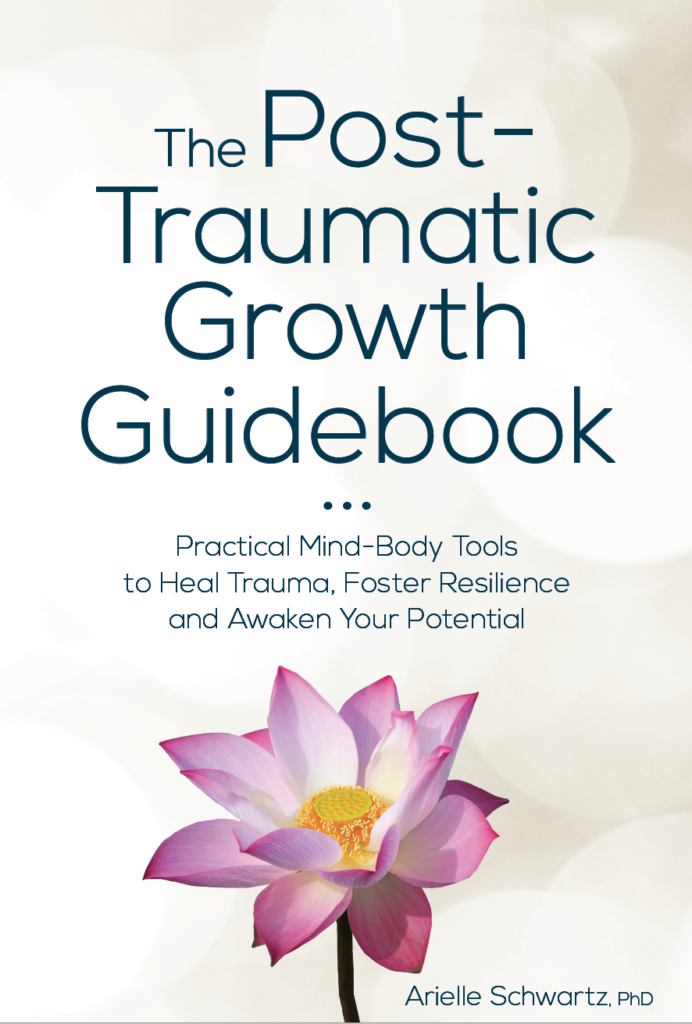
In short, neuropsychotherapy refers to the practice of integrating neuroscientific research into psychotherapy. This integrative approach to therapy that explores the connections between your mind, body, environment, and social interactions. A wide range of therapeutic modalities are based in this neurobiological approach to healing including EMDR Therapy, Somatic Psychology, and time-tested relational therapy. Within this post, we will explore six components of trauma recovery based upon neuropsychotherapy: Relating, Resourcing, Repatterning, Reprocessing, Reflecting, and Resilience.
“Reprocessing traumatic memories involves connecting traumatic memories with new information. As a result, distressing images, thoughts, sensations, and emotions associated with traumatic memories can be integrated with new resources. Overall, the neurobiology of trauma recovery helps you to learn how to move out of hopelessness, increase your capacity to feel empowered, and recognize that you are capable of living the life you want and deserve.”
–Dr. Arielle Schwartz

Psychiatrist, Dr. Daniel Amen (2015) analyzed more than 83,000 brains and concludes that it is possible to change your brain. Likewise, Norman Doige, author of The Brain That Changes Itself (2017), suggests that your brain changes every time you learn something new. Furthermore, this growth occurs throughout your entire lifespan—a process referred to as neuroplasticity. Likewise, Norman Doige, author of The Brain That Changes Itself (2017), suggests that your brain changes every time you learn something new.
Ideally, the neural networks of your memories connect across various areas of your brain. This is called memory consolidation and this allows each singular event to becomes integrated with the thousands of other previous experiences already held within your brain. For example, the right hemisphere of the brain is more likely to hold negative perceptions and emotions about the past. In contrast, the left hemisphere is specialized for positive emotions. Neural networks that communicate across left and right hemispheres of the brain can help you express feelings with words and integrate positive and negative perceptions of emotions. Additionally, integration of neural networks between upper brain centers (neocortex) and lower brain centers (limbic system and brain stem) helps you to reflect upon your experiences, gain perspective, manage impulses, and develop greater self-control.
According to Francine Shapiro, developer of EMDR Therapy, traumatic memories can be thought of as impaired encoding of neural networks. These memories are not integrated with positive experiences and are limited in their ability to accommodate new information. This disconnection can impair your ability to be emotionally flexible and cognitively constructive or creative while thinking about difficult life events. Dr. Bessel van der Kolk, trauma treatment expert and author of The Body Keeps the Score, further advises that lasting change happens as you become aware of traumatic events and release the hold that these events have on your body.

From the perspective of neuropsychotherapy, we can look at Six Rs of trauma recovery—Relating, Resourcing, Repatterining, Reprocessing, Reflecting, and Resilience. Let’s take a closer look:
One of the most profound ways that we rewire the brain is through a healing relationship; one that allows us to feel cared for and understood. According to Louis Cozolino, author of The Neuroscience of Psychotherapy (2010), our brains are wired for connection, are strengthened by connection, and cannot be fully understood outside of the context of relationships. A supportive therapeutic relationship allows you to connect to the resource of your social nervous system (the most recently evolved circuit of your vagus nerve). Here, you use the resource of a relationship to establish that you are both safe and connected. Moreover, neuroplasticity points toward the potential to be changed by relationships throughout your life. In other words, your brain is re-wiring early attachment wounds and relational trauma in the context of a loving, healthy connection.
Initial phases of healing from trauma focus on strengthening neural networks associated with positive sensations, emotions, and cognitions. Examples of resources include moments of loving others, feeling loved by others, feeing comforted or protected, feeling competent or successful, and recalling experiences of safety, peace, or relaxation. Resources also involve breath, movement, and embodied states that helps you feel strong and empowered. Each positive state initiates a release of your natural feel-good chemicals by increasing dopamine, oxytocin, serotonin, and endorphins. Through repeated practice, you can strengthen neural networks associated with positive sensations, emotions, and cognitions in preparation for trauma reprocessing.
Neuropsychotherapy does not only involve changing in your brain. This process also recognizes that trauma resolution involves integrating new movement resources that may not have been available to you at the time of the traumatic event. For example, if you weren’t able to run away from a dangerous situation, you might feel the impulse to move your legs when you think about that situation now. Or, if you weren’t able to protect yourself from an abuser, you might feel an impulse to push through your arms. Sometimes, somatic repatterning leads to trembling or shaking in your arms and legs as you release traumatic activation from your body.
You can change maladaptive neural networks by connecting the distressing images, thoughts, sensations, and emotions associated with traumatic memories with your resources (Shapiro, 2018). When you recall any memory, you also have an opportunity to insert new information related to your present state of mind and environment. Reprocessing involves recalling a traumatic event and the related images, beliefs about yourself, emotions, and feelings in your body. This re-activates the neural networks associated with that event. Now, you can focus on finding reparative experiences that facilitates integration throughout the brain. As you reprocess traumatic memories, you have an opportunity to challenge faulty beliefs associated by offering your knowledge of factual information.
Trauma asks you to come to terms with the lack of reason or overpowering senselessness that often surrounds acts of violence, abuse, or even natural disasters. It can feel nearly impossible to comprehend such events, especially when they are delivered by fellow humans. However, this is the task set before you; to reflect upon your unique life experiences and begin to develop a personal sense of meaning. Meaning making is a very personal process. The more difficult the challenge, the harder you will have to work to find your inner strength, courage, or sense of hope. Most importantly, you are the only one who can choose how you ultimately respond to your circumstances—You have the freedom to reflect on the meaning that you attribute to your life.
Resilience is the ability to flexibly adapt to challenging, adverse, or traumatic life events. Resilience is not just a mindset or a set of behaviors. Rather, you can increase the health of your brain through regulation of your vagus nerve and increasing the flexibility of your autonomic nervous system. This is accomplished by engaging your social nervous system and through working with mind-body therapies such as yoga, meditation, or relaxation. You can read more here about the use of mind-body therapies for vagus nerve health.

Collectively, the six Rs of trauma recovery can support your resilience and provide direction on your healing path. When you are empowered by knowledge, you can take an active role in your journey of trauma recovery. Most importantly, my hope is that you come away with an increased sense of hope about your journey to trauma recovery.
Art Credit: Eugene Ivanov (All Images made available through Creative Commons)

This blog offers a preview of The Post Traumatic Growth Guidebook: Practical Mind-Body Tools to Heal Trauma, Foster Resilience, and Awaken your Potential. Within the pages of this book, you will find an invitation to see yourself as the hero or heroine of your own life journey. A hero’s journey involves walking into the darkness on a quest for wholeness. This interactive format calls for journaling and self-reflection, with practices that guide you beyond the pain of your past and help you discover a sense of meaning and purpose in your life. Successful navigation of a hero’s journey provides opportunities to discover that you are more powerful than you had previously realized. Click here to order the book on Amazon.

Dr. Arielle Schwartz is a licensed clinical psychologist, wife, and mother in Boulder, CO. She offers trainings for therapists, maintains a private practice, and has passions for the outdoors, yoga, and writing. She is the developer of Resilience-Informed Therapy which applies research on trauma recovery to form a strength-based, trauma treatment model that includes Eye Movement Desensitization and Reprocessing (EMDR), somatic (body-centered) psychology and time-tested relational psychotherapy. Like Dr. Arielle Schwartz on Facebook,follow her on Linkedin and sign up for email updates to stay up to date with all her posts. Dr. Schwartz is the author of three books:

Arielle Schwartz, PhD, is a psychologist, internationally sought-out teacher, yoga instructor, and leading voice in the healing of PTSD and complex trauma. She is the author of five books, including The Complex PTSD Workbook, EMDR Therapy and Somatic Psychology, and The Post Traumatic Growth Guidebook.
Dr. Schwartz is an accomplished teacher who guides therapists in the application of EMDR, somatic psychology, parts work therapy, and mindfulness-based interventions for the treatment of trauma and complex PTSD. She guides you through a personal journey of healing in her Sounds True audio program, Trauma Recovery.
She has a depth of understanding, passion, kindness, compassion, joy, and a succinct way of speaking about very complex topics. She is the founder of the Center for Resilience Informed Therapy in Boulder, Colorado where she maintains a private practice providing psychotherapy, supervision, and consultation. Dr. Schwartz believes that that the journey of trauma recovery is an awakening of the spiritual heart.
Beyond Trauma — A Guided Mind-Body Journey of Resilience – (September 20, 2024 – September 22, 2024)
Applied Polyvagal Theory in Yoga—An Immersive Therapeutic Weekend (June 21st & 22nd, 2024)